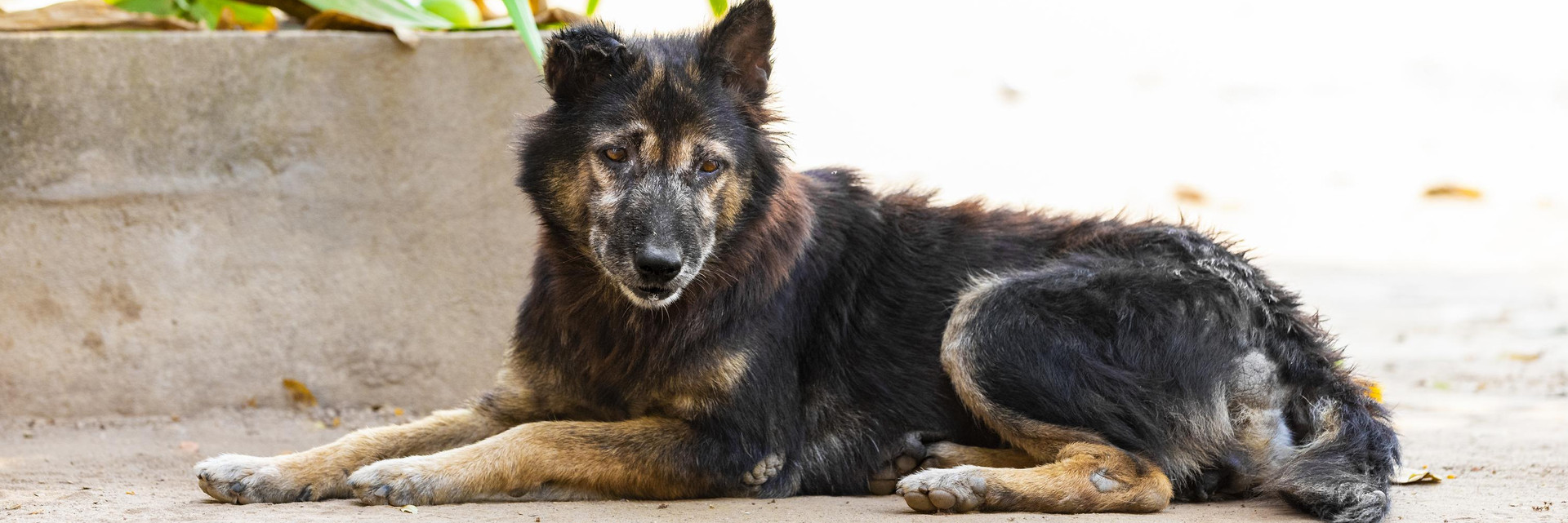
Staying Safe Around Street Dogs
What to be aware of and how to behave
Depending on where you live, you might not see stray dogs on the streets very often or none at all. However, some of the most popular vacation spots in Southeast Asia and Eastern Europe have large numbers of stray animals, and sadly little is done to address the issue or manage the population. Also, the local population is normally used to encountering strays but visitors who are not accustomed to stray animals need to be aware of the dos and don’ts for how to interact with them.
Many stray dogs are very friendly, especially in tourist areas, as they are used to human contact and often receive food and attention from people in the community. However, you may still encounter some that are less welcoming. These are usually dogs that have had little contact with humans or have had negative experiences with them, making them wary. If dogs are scared, they might try to defend themselves, their litter, their food, or their territory. You should consider this and avoid confrontation with dogs where you risk being attacked and/or bitten.
If a dog barks at you from a distance, it is a warning to stay away from their territory. If you remain calm, keep a safe distance, and walk past slowly, you are unlikely to encounter any problems. If in doubt, it’s best to avoid any kind of confrontation. If a dog starts to chase you while you’re jogging or riding a bicycle/motorbike, it’s best not to speed up, as that could encourage the dog to chase you, putting both you and the animal at more risk of an accident or injury. The best response is either to stop and wait for the dog to move away or to continue moving very slowly. A dog is much less likely to chase you if you move slowly and stay calm.
6 Tips for Your Safety
FOUR PAWS has prepared the following guidelines on how to stay safe around stray dogs:
Never run away.
The most important point to remember is that you should never run away from a stray dog (or any dog). Running away can trigger a dog’s hunting behavior, which tells them to chase you. It’s better to walk away slowly to avoid triggering that behavior. If you’re on a bicycle or motorbike, slow to a halt and wait for the dog to leave.
Avoid confronting a pack.
Dogs are pack animals and tend to stay in groups, where they can protect each other. If you are out walking and spot a group of dogs, it’s advisable not to go near. Dogs are territorial animals, and if they feel threatened, they could confront you. Be especially careful at night: in the dark you may not be able to see all the dogs around you.
If you do happen to wander into a pack, stay calm and move away slowly. Don’t make any sudden movements, shout or run. Keep your arms close to your body and avoid direct eye contact with the animals.
Avoid sending signals that dogs might perceive as a threat.
Dogs are very good at reading our body language. There are some types of human behavior that dogs find threatening. These include staring at them, yelling, waving arms about, leaning forwards and walking directly towards them. These are behaviors that will identify you as a threat. It’s better to send calming signals.
Send calming signals.
If you meet a dog that you are unsure about, don’t try to be threatening or show anger. Instead, send calming signals such as yawning or licking your own lips, avoiding eye contact and standing sideways to the dog. You can also try crouching down and letting them sniff you (if you feel comfortable doing this). It is important that the dog comes to you voluntarily and that you do not actively approach it.
Ask locals for help.
If you feel threatened by dogs in the street, you could try asking one or more local(s) for assistance. Many of the dogs will be regulars in the area and are likely to respond better to someone they know.
As a last resort…
While we strongly recommend keeping calm and behaving in a non-confrontational way, if you feel very threatened, you could crouch down and pretend to pick up a rock or stick. But do not actually throw anything at the dog! Sometimes, just pretending to pick something up can make a dog run away (unfortunately a sad reflection of the regular abuse that many stray dogs suffer at human hands).
Worst-case scenario
If the worst-case scenario occurs and you are attacked by dogs, try to fend them off with a backpack or stick. If you end up on the ground, protect your head and vital organs. Lie down and curl up in a ball, using your arms to cover your head. Then try to keep still, even though this may be difficult. The dogs are more likely to lose interest in you quickly if you stay calm. Once the dogs have moved away, slowly get up and leave. Get yourself to a safe place and visit a hospital as soon as possible.
What you can do to help stray animals
Feeding stray animals is very common in tourist areas, but it comes with several risks that you need to consider:
- In many countries, feeding is prohibited by law, making you liable for prosecution.
- Once fed, stray animals could then potentially follow tourists, causing them to leave their area and perhaps run the risk of being involved in territory fights or (car) accidents.
- Feeding is also a danger for humans because they come into close contact with animals that can snap or become aggressive out of greed. Not forgetting the risk of transmission of zoonotic diseases that can be fatal, such as rabies.
- The next tourist might feel disturbed by the begging animal and call the “dog catchers”. In the worst-case scenario, the dog is then taken to the local animal shelter, where the animal often has to spend the rest of its life or is killed.
- They can gain a dependence on humans through the feeding from tourists who are only available for a short period of time and mostly it´s not appreciated by the local people. After the tourists leave, it's maybe harder for the animals to find food.
- Stray animals will become more used to begging for food and this may cause upset, stress, fear among other tourists and locals.
- The quality of food could vary and perhaps cause injuries and illness (for example, cooked chicken bones, meat on sticks e.g.).
It is more helpful to contact local animal welfare organizations that already support stray animals in the community and, if possible, support them with volunteering or donations. These organizations can also help sterilize stray animals, set up feeding stations and generally support animals more effectively in the long term. If you see an animal in need of medical care, you should contact a veterinarian or local animal welfare organization.

